Adiantum pedatum
A very delicate fern with unusual fan-shaped blades
Adiantum pedatum northern maidenhair fern
Blades of this fern are very graceful in appearance, fan-shaped and arch in a horizontal or slightly pendulous manner, and are borne on slender, erect stipes. The shape of the blade is bipinnate-pinnatifid.
The fiddleheads are delicate, of wine-red color, and emerge in early spring.
Habitat & Range
Grows in rich, decidious woodlands and bottoms of rocky slopes, likes limestone. Can be found in a variety of soils, prefers moist, rich soil with a little above 7 pH.
Range is from Nova Scotia to British Columbia and to Vermont, south into Georgia and Arkansas.
| EMP: | FAC |
|---|---|
| NCNE: | FACU |
Characteristics
Fronds stipes erect, bearing horizontal or slightly drooping blades of bright green color ( color changes to brownish at end of growing season); sterile and fertile fronds are the same.
Blade fan-shaped, semicircular, forms by division of rachis into two branches, usually 5 to 6 pinnae occur on outer side of each branch.
Pinnae smooth and elongate, up to 7 in long. Longest pinnae are located at the point of divergence of the two rachis branches. Each pinna is divided into 12-20 pinnules.
Pinnules alternate, with a very short petiole, shape varies from oblong to fan-shaped at tip of the pinnae with margin entire closest to the edge of the blade and incised to different degrees on the opposite edge.
Rachis smooth and slender, black to purple-brown.
Stipe erect, very long (up to 20 in), and smooth (except for scales at the very base) with wire-like appearance, shining black to purple-brown. Stipes are often visible on the ground after the fronds die.
Sori elongate, on outer margins of the pinnules. Margins of pinnules are reflexed forming false indusium.
Rhizome horizontal and creeping, with bronzy, grayish-brown scales near the growth tip.
APG/Taxonomization Info
The genus of this fern, Adiantum was formerly placed into its own family Adiantaceae. Since 2006, based on phylogenetic research, Adiantaceae has been
merged into family Pteridaceae and all the genera within Adiantaceae moved into a subfamily of Pteridaceae, Vittarioideae.
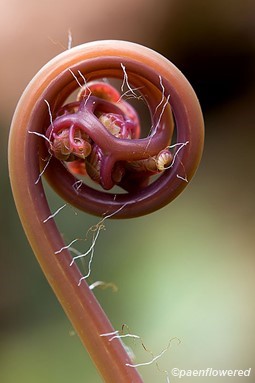
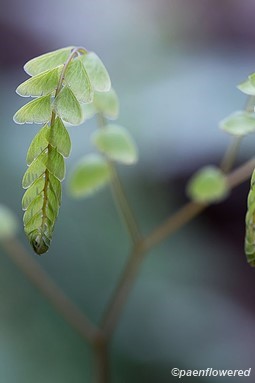
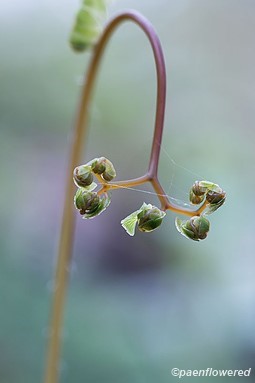
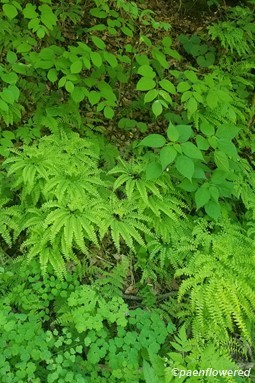
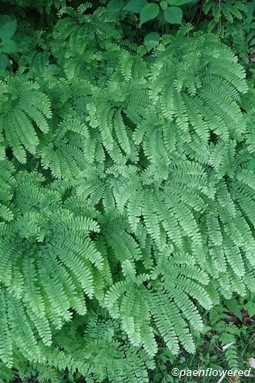
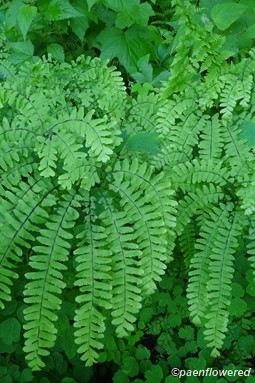


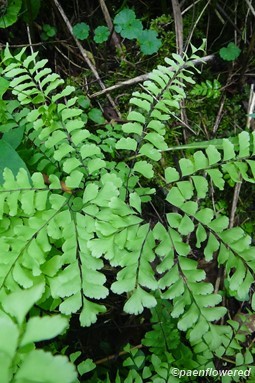
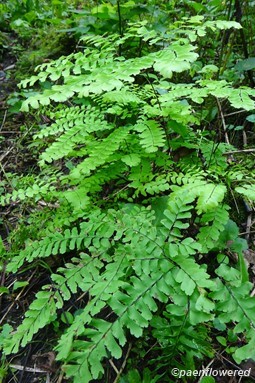
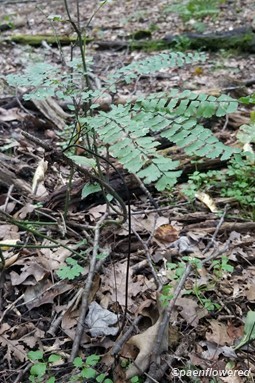
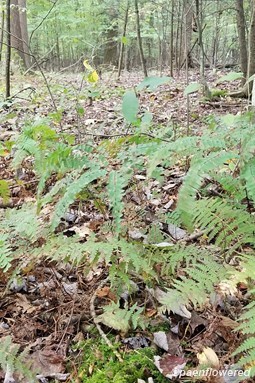
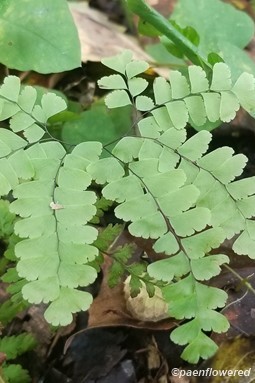
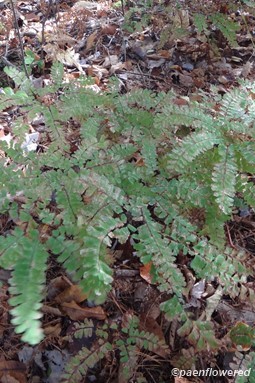
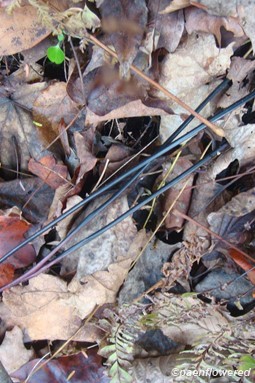

Comments
Have you spotted this plant in your area? We'd love to hear about your experience! Share your comments or questions about the plant below. Comments are moderated before posting.